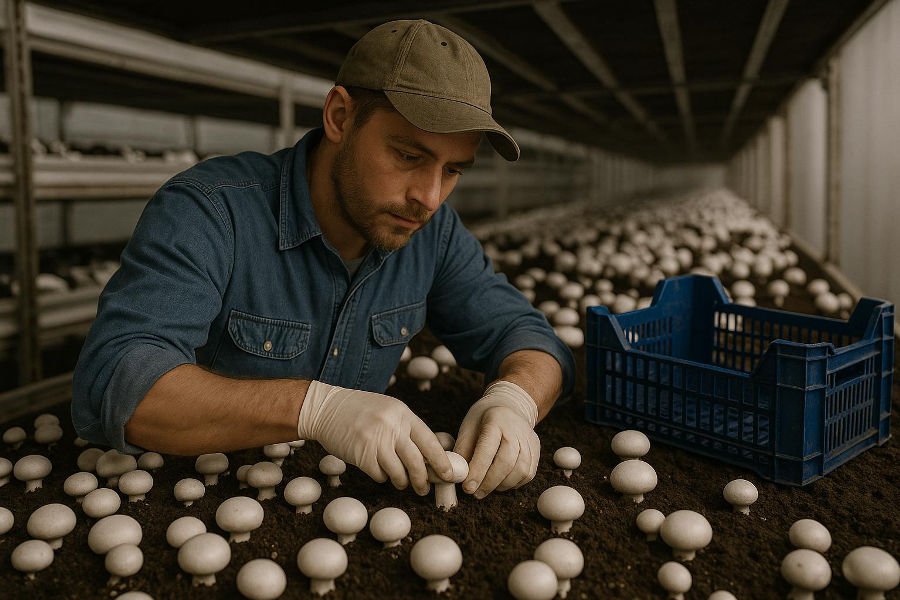Mushroom Farming: Small Space, Big Profits
In the world of modern agriculture, mushroom farming is making quiet but powerful waves. What was once considered a niche hobby is now turning into a serious business opportunity — especially for those with limited land, low capital, and a hunger for innovation.
So, why are so many farmers and agri-entrepreneurs turning to mushrooms?
1. Low Investment, High Returns
Unlike traditional crops that require acres of land and heavy irrigation, mushrooms grow vertically in compact spaces like sheds, rooms, or even basements. You don’t need tractors or fertilizers — just a clean environment, proper temperature control, and agricultural waste like wheat straw, paddy straw, or sawdust.
A small-scale setup can be started with as little as ₹30,000–₹50,000, and the first harvest is ready in just 3 to 4 weeks. In the right conditions, a 100 sq. ft. area can produce up to 30–50 kg of mushrooms per cycle, offering profits that traditional crops struggle to match in such space.
2. Growing Demand in Indian Markets
Mushrooms are no longer exotic. With more awareness about their health benefits — such as being rich in protein, vitamins B and D, antioxidants, and fiber — demand is rising in both urban and rural areas. Restaurants, hotels, supermarkets, and even households are looking for fresh, quality mushrooms.
Common varieties like Button mushrooms, Oyster mushrooms, and Milky mushrooms are especially popular and fetch good market prices when grown with care.
3. Eco-Friendly and Sustainable
Mushroom cultivation is a great example of circular farming. It turns agricultural waste into a valuable crop. Plus, once the mushrooms are harvested, the leftover compost (spent mushroom substrate) can be used as a natural fertilizer or fed to cattle — reducing waste and improving soil health.
4. Employment and Empowerment
Mushroom farming is ideal for women self-help groups, rural youth, retired individuals, and even college students. It requires less physical effort, offers quick learning curves, and provides a genuine chance at self-employment and income generation.
Getting Started: What You Need
-
Clean, ventilated space (shed or room)
-
Mushroom spawn (from a trusted supplier)
-
Substrate material (wheat straw, paddy straw, etc.)
-
Water and humidity control
-
Basic training (easily available online or through agri departments)
With just basic training and a small investment, you can run multiple growing cycles throughout the year — especially in controlled environments.
